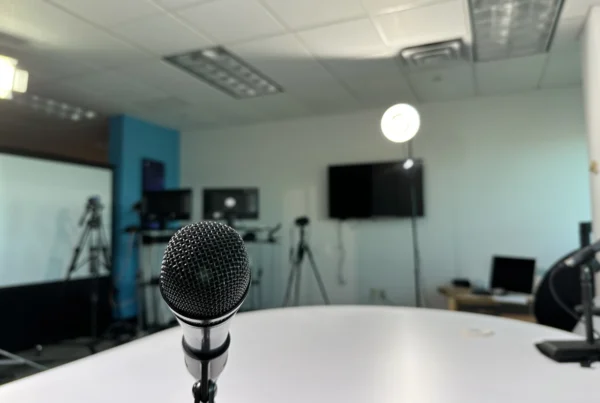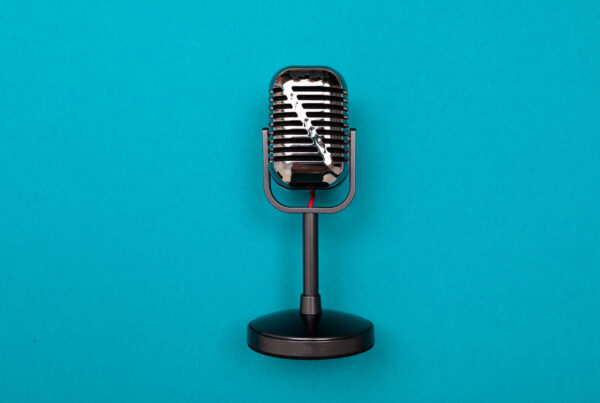With Twitter’s future taking a hard turn under new owner Elon Musk, what should be the strategy be for businesses and brands that may feel caught in the middle of a cultural and political battle. Team Tunheim’s Pat Milan, David Erickson and Maddie Greene discuss the options.
Team Tunheim Hosts

Pat Milan

David Erickson

Maddie Greene
The Thing About Twitter Transcript
Pat Milan: Elon Musk owns Twitter. The top lawyer for Twitter, in trying to reassure the staff, broke down in tears. The staff is freaking out. The right is screaming about free speech being quashed. The left is screaming about misinformation and outright lies being published to unwitting audiences. And the noise goes on and on and I don’t want to talk about that. Is that fair game?
David Erickson: Fair game?
Maddie Greene: I’ll allow it.
It’s Time To (Re)Ask: What Should You Be Doing On Twitter?
Pat Milan: My question is this: No matter what happens, Musk in Musk out–by the way, I hate Musk as a cologne–Twitter becoming a town square where anybody can say anything, you know, on a big platform that reaches anybody who wants to get on it. What should business and organizations be asking before they determine what to do or what not to do on Twitter? So joining me is David Erickson, the Director of Integrated Digital and Social Media, and Maddie Greene, who’s a Senior, I should say, Senior Digital Strategist.
Maddie Greene: That’s very important.
Pat Milan: Yeah. Don’t forget that. When did you get on Medicare?
Maddie Greene: It’s been a couple days, now.
Pat Milan: When I posed this question, in our Tunheim internal chat, Maddie, you had a really good point that I think really usurped all the noise that’s out there on Twitter. You asked if clients have even tried to figure out what value Twitter brings to their business?
Maddie Greene: I mean, I think that’s where we should be starting. And it should be something that we should start at before we talk about who owns Twitter, who is on Twitter, what we can and can’t say is what value is this even bringing to our business? Or your business? And how do you quantify the topics that you’re talking about? And and what kind of conversations are we having?
Pat Milan: Do we think people are actually doing that? Are they just honored to be on it? Or companies, I should say; people are on it to be on it.
Maddie Greene: I just wonder what we’re doing on Twitter? Like, I mean, honestly, like, what are we doing? Are businesses using it for business purposes? Or are they using it to post funny memes? I just I want to know what value it’s bringing to businesses before we talk about who owns it. Like, is this really the platform for businesses, anyway?
Making The Business Case For Twitter
David Erickson: So a couple of examples…
Maddie Greene: Yes.
Twitter For Customer Service
David Erickson: Comcast–I don’t know if they’re still doing this; hopefully they are because they probably need to–do back in the day had @ComcastCares. Frank…what’s his name?
Pat Milan: Was he the CEO?
David Erickson: No, he was a customer service employee. He took it upon himself to use Twitter to start answering questions or complaints that people had about Comcast, which were a lot, because it’s Comcast, right? And I was one of them. I don’t remember what the issue was but I complained about it on Twitter and Frank Eliason, was his name; Frank got back to me right away and DMed me and got my address. And within an hour–my DVR was not working–within an hour got a DVR in my hand. A technician came in, made sure it worked. The technician gave me his phone number, his cell phone number to call back if anything happened. Frank followed back up. That’s the way to–
Pat Milan: See that to me was the secret ingredient for Twitter. You shortcut dial one, press two–
Maddie Greene: Wait on hold.
Pat Milan: –wait on hold forever. And if there wasn’t a Frank that was answering it, you could just shame the hell out of them on Twitter and get their attention. Delta was really good for a while. I don’t know if they are anymore.
Maddie Greene: Taco Bell. I once went to a Taco Bell through a drive-through and they said they were out of nacho cheese. How are you–Taco Bell–out of nacho cheese? I just don’t understand it. So I tweeted about it. And guess who got free tacos? This girl?
Pat Milan: Yeah, but with no cheese.
Maddie Greene: Yeah, they’re out of nacho cheese.
Pat Milan: Okay, so we just articulated a really good way to use Twitter. It was an early use. Do you think it’s being effectively used now? Or is it just become another noisy channel for complaints?
Maddie Greene: What do you think, David?
David Erickson: You were shaking your head no, so I’ll let you start and then I’ll…
Is Twitter Just Noise?
Maddie Greene: I think that some brands have made it a point and a priority to use it in that way still. But now that people see that that’s an avenue in which they can complain, I think there’s a lot of complaints and there’s not much praise on Twitter for brands. It’s mostly like, hey, Comcast, my DVR isn’t working; or hey, you’re out of nacho cheese, like–
Pat Milan: No body ever goes to Taco Bell saying, Hey, thanks for having cheese.
Maddie Greene: Yeah.
Pat Milan: Way to go, guys.
Maddie Greene: Thanks for having that hot sauce. No, it’s always the complaint.
David Erickson: So that’s true but, you know, complaints get resolved.
Maddie Greene: That’s true.
Cultivating Brand Loyalty & Bypassing Media On Twitter
Pat Milan: We didn’t do much planning, so I’m going to ask you a question I don’t know if you know the answer to. It’s like a really bad defense attorney here right now. Can either of you think of the best business case you’ve ever seen for Twitter? For an honest to God brand or company? Now Comcast was a good example. But I’m guessing they don’t do that anymore.
David Erickson: Well, I hope they do but anyway…The Vikings or any sports team. You have a huge community of fans on Twitter. I’m a Twins fan. Twins fans are talking all the time. The most engagements I get in my own personal Twitter account is when I post about the Twins.
Pat Milan: And it allows the Vikings to do the thing every other company wishes they could do–
David Erickson: Exactly.
Pat Milan: –bypass earned media, right? Tell your own story. So that…and sports does it? Well. I will say the thing I use Twitter most for is to find out if the Wild are going to score a goal 40 seconds before it happened on the screen I’m watching. I know it’s I should pay attention now and I know who’s going to score. Can you think of a great business case that you’ve seen in the last couple of years?
Maddie Greene: Oh, man, I don’t know. Not really.
Pat Milan: That’s the scary part. I mean, we don’t really have many.
David Erickson: Well–
Pat Milan: –It just is–
Twitter For Media Relations
David Erickson: Yeah, but what we do: Public Relations, earned media. That’s an avenue to earn media because reporters are all over Twitter. They are breaking news on Twitter, they’re finding sources on Twitter, they are sharing their stories on Twitter. And they’re developing sources so that’s where we can go to most easily create a relationship with the reporter to earn some media.
Maddie Greene: And I just wonder how much of what’s happening in the world has kind of influenced that business on Twitter. Only because when any current event happens, the first thing I do is check Twitter for what’s happening. And so maybe it’s not even–that’s why I asked the question at the beginning, like are businesses even using this anymore? Because all I see is news. Or maybe that’s all I’m searching for. So it’s it’s what is the value brought and the time and energy we’re spending?
Twitter Communities
Pat Milan: Well, that’s that gets to the other really good point, because people say, Oh, it’s this massive public square. And I’m like, it may be but it’s a bunch of different people huddled in small groups in the massive square. I mean, right? You see what you choose to see. And you don’t see what you purposely do not want to see.
David Erickson: It’s absolutely true. But there are distinct communities on Twitter: Black Twitter, Vikings Twitter–
Maddie Greene: Marketing Twitter.
David Erickson: Marketing Twitter. But the other thing–are businesses using Twitter? Yes, they are even if they don’t think they are because most of the social listening channels that we use to find out what kind of conversations people are having online, most of that data those listening platforms are built around is Twitter conversations. So what happens if Twitter goes away?
What If You Lost Your Twitter Followers Tomorrow?
Pat Milan: That was your reply to my question in our internal chat. And it’s a fascinating one. What if Twitter didn’t exist today? What would we be using?
David Erickson: Well, we don’t have, one: We don’t have another social platform that is largely public, right? So you have to log into Facebook, to see the content of Facebook; you have to log into LinkedIn to see the content to LinkedIn, etc, etc. It is literally the digital public square for that very reason.
Pat Milan: And you can remain anonymous.
David Erickson: And you can remain anonymous and you don’t have to log into Twitter to see Twitter, right?
Maddie Greene: You can see those tweets just by getting, you know–twitter.com, I can see whatever I want to see.
David Erickson: But the other thing is, I mean, right now, Musk has not yet finalized the deal but he’s gonna buy Twitter and we don’t know what he’s gonna do with it. You need to start thinking about what you are doing now. Why are you using it? Are your followers really important to your business? And if they are, then how do you maintain that connection if Twitter all of a sudden shuts down? Because some of the conversation around Musk buying it is he might make it in a subscription service, in which case a lot of people are going to leave Twitter just because they don’t want to pay for it.
Pat Milan: What else should we be thinking about? I mean, if you’re if you’re sitting with a client–and we assume there’s some clients listening to this–and they’re trying to figure out number one, you ask the question: What are you doing and why are you doing it? And how effective is it? But if this turns into some weird, or I should say weirder, space than it is now, what should clients be asking themselves about whether they’re in it or out of it? How do you start to begin that process, particularly for larger organizations where this is a difficult decision with a lot of different tentacles in it?
What Alternatives To Twitter Do Your Audiences Use?
Maddie Greene: I would start by saying that while this is not a done deal, yet, I would not wait until a decision is made to start asking yourself any sort of questions? This should be a proactive approach to your strategy as a whole. One thing that I mentioned in our internal chat was, I want to know how we could transition the engagement from Twitter to a different platform. So where else are your followers at? So meeting them where they are. If they’re not on Twitter where are they going to be, now? Do we go to something different? Like a Pinterest? Or do you talk to them in a Facebook group? Or, you know, are you going to start an email newsletter now to connect with them? But if you–
Pat Milan: Excuse me, email? Email, what’s that?
Maddie Greene: Email, who knew? The nice thing about it, is it allows you to do that audit of what you’re doing now and how you’re connecting. And if you’re not having any conversations, the world is your oyster. You could try anything at this point, if you’re not losing any followers.
Do You Own Your Twitter Audience?
David Erickson: Yeah. And on top of that is take a look at who is your audience, who is it that you need to talk to? And what are they doing on Twitter? And what are they saying now about this, right? Are they planning–“Well, I don’t know if I want to stay”–then take note. I get back to email. That’s the direct connection you have with your customers or your followers. If he can get their email addresses, then you don’t have to worry about Elon Musk shutting down Twitter.
Pat Milan: But how reliable is email? Because I will tell you, I know a lot of people who don’t work like we work. We live off email, not as much as we used to, but we still live and work off of it. I know a lot of people who will say I haven’t looked at my email in days. There’s a whole world out there that isn’t living and dying on email and isn’t staring at their phone 24/7.
David Erickson: But they’re still connected via email. So I mean, you can’t open up a social media account without an email address or phone number, right?
Pat Milan: No, I meant they have it. I’m saying they’re just not as active with it as–
David Erickson: –But if you have their email address, then you can reach them on social media, because you can target them with advertising the other–
Pat Milan: Fair point.
Maddie Greene: And I think that if they’re not opening their email, how likely are they to be opening their Facebook or their Twitter anyway? I mean, I know that some of my roundups of things that are happening on social media platforms come into a email format format for me, like a roundup. Did I say roundup? It was a roundup, did you hear? It was a roundup? Just wanted to make sure you knew it was an email roundup.
Emerging Alternative Social Channels
Pat Milan: Hey, so we’re living in this world with what exists now. But it always changes so fast. I’m curious. What’s out there that you guys see? Obviously, TikTok is going to come up here quickly. But what should people be experimenting with? What should they be looking at? Because it is interesting: Twitter really peaked a couple years ago. It hasn’t been growing for over 18 months, I think. So what’s coming? What what do you guys see that is worth…? Because we’ve talked about experimentation. What are the other avenues? What’s out there that you’re playing with that people should be playing around with?
Live Audio & BeReal
David Erickson: Well, I mean, audio. Audio marketing, podcasting. But live audio–so Clubhouse was a flash in the pan–Clubhouse got really popular and then they got cloned by everybody. But Twitter has the most active live audio platform right now with Twitter Spaces. I don’t think that idea is going away. LinkedIn is working on live audio, which makes a lot of sense for LinkedIn because they’re working on conferences, as well. So that immediacy, the intimacy of a conversation like we’re having. The other thing I’m keeping an eye on–I don’t know if it’s real or not–but it’s called BeReal.
Maddie Greene: Yeah, so this–
Pat Milan: What’s this? I haven’t even heard of it.
Maddie Greene: Okay, so this platform sends you a message, or a reminder, and gives you two minutes to share what you’re doing in that moment. The entire thought process behind this app is to be as authentic and real as possible. That’s why it’s called BeReal. But it has grown in the first quarter so quickly; it grew three times faster than TikTok grew in its first quarter. And so it’s very interesting.
David Erickson: It’s the fourth-most downloaded app in the first quarter.
Pat Milan: I’m curious, does anybody really want to be real or do they want to post pictures of themselves on fake vacations?
Maddie Greene: Yeah, and this the thing about this app is it makes you take the photo.
Pat Milan: Oh.
Maddie Greene: You can’t you know, scroll through your camera roll and be like, “Oh, I’m gonna post a photo from Florida” and I’m sitting at my desk in Bloomington, Minnesota.
David Erickson: And you can’t see your friends’ photos until you post. So it’s forcing the engagement. You take a back-facing photo at the same time it takes a front-facing photo. So whatever you’re looking at–what you’re doing, what you’re being real with–is coupled with a photograph of yourself.
Pat Milan: In my age group forced engagement is called shotgun. I don’t know why they didn’t come up with this as their handle. So BeReal. What else? Anything else that’s interesting out there?
TikTok Is Still Growing
Maddie Greene: I do think that TikTok is continuing to grow and brands are doing a better job of using it. And its ad revenue is reaching new peaks every time we see a report.
Pat Milan: I’m shocked every time I see the ad revenue numbers. I’m still trying to figure out how they’re making all that money.
Maddie Greene: I mean, it is so much money. I just think it’s a place that if you haven’t tried it yet, it might be–and might is not even in this question, actually–it should be the next place you try. That’s because you can repurpose content. If you’re already making video content on Instagram, you should be repurposing that content on TikTok.
Pat Milan: How do you get your CEO to skip down the hallway to “Oh, No”?
Maddie Greene: I don’t know. Maybe we should…we can ask Kathy what she wants to do.
Pat Milan: Well, I can tell you she won’t do that.
Maddie Greene: Yeah, well, I haven’t asked her yet. So…
Pat Milan: Well, we’ll see how this plays out. I mean, I think it’s a done deal. I think it’s gonna happen. This is my watching this at 30,000 feet thing: I think it’s the latest great distraction for Elon Musk. And I wonder if the people at Tesla are wondering if this is going to screw up their car company? Because he’s now off conquering something else he didn’t create. But we’ll see.
Maddie Greene: Wow! That was snappy. I liked it.
Pat Milan: I can be an %@#*!
Maddie Greene: Yeah, I liked it.
Pat Milan: Hey, thanks for doing this.






